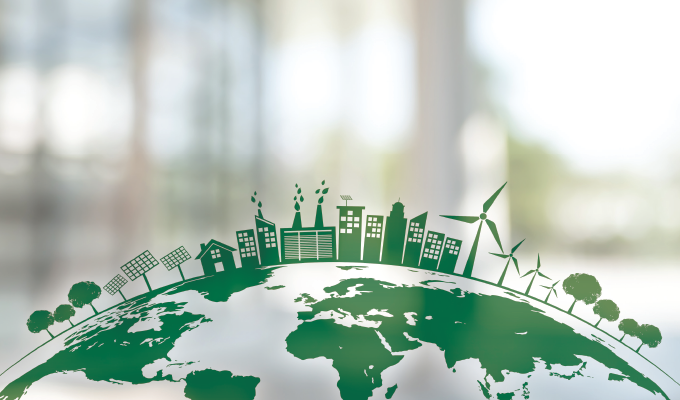With more than 40 percent of construction projects expected to go green through 2021, the influence of the green construction industry continues to grow. But how has the COVID-19 pandemic affected green construction practices? Tommy Linstroth, CEO of Green Badger, a provider of cloud-based LEED documentation management services, shares some insight.
Has the pandemic changed anything this year for green building?
LINSTROTH: The green building and construction industry has faced the same challenges as everyone else. The pandemic has a definite impact on construction in general and further enhanced the importance of green building. During shutdowns, teams begin to rethink how to optimize indoor air quality of buildings to reduce the possibility of transition of airborne diseases. While it was always important, never has it been more top of mind. This has resulted in many green building certifications (LEED, WELL) to develop new pilot credits for both HVAC design and maintenance to cleaning protocols, which will impact the industry for years.
Can you speak to the increase of green building demands for contractors?
LINSTROTH: Health is top of mind—both for buildings and occupants, but the teams constructing the buildings as well. Contractors will see both new designs and technologies related to healthy buildings becoming more prevalent, as well as continue to adopt to the new normal of social distancing and personal protective equipment while still trying to manage schedule and budget.
What are your thoughts on the USGBC’s reactions to the pandemic?
LINSTROTH: USGBC, AIA, and WELL all took positive steps to look at what healthier buildings may look like moving forward. Balancing energy efficiency with increased calls for ventilation will always be an issue, but encouraging the use of better filtration, air treatment, and better maintenance practices will hopefully have positive results in short order.
Have any unique sustainable building challenges for contractors developed this year?
LINSTROTH: Contractors are facing the same challenges we all are—maintaining personal safety while continuing to work in the new normal work environment. There have been supply chain disruptions, work interruptions—all things that are impacting GCs ability to get the job done, green building or no green building.
How is LEED addressing livability concerns?
LINSTROTH: The USGBC is serious about address livability issues during the COVID-19 era. It has issued special pilot credits that cover four areas that impact health: managing indoor air quality, building water system recommissioning, cleaning and disinfecting the space, and reentering the workspace. These guidelines are only the start of efforts to deal with the ongoing health concerns facing any commercial facility.
What are the obstacles to implementing the sustainability and health solutions that LEED offers?
LINSTROTH: One of the biggest sticking points comes with balancing energy efficiency with ventilation. Which is more important—the short-term human health factor or longer-term climate change risks? Balancing the two, and finding new ways to ensure healthy indoor environments, will be an interesting challenge moving forward.
Can technology help overcome those obstacles?
LINSTROTH: Technological solutions can help—do we need more fresh air if we can treat all the air inside already? Ionization technologies, UVC light, and other solutions will help solve that issue, but this is still all so new, it will be continuously evaluated to see what the best approach is.
As we’ve seen with new concrete solutions, the pandemic seems to be driving an increase in sustainable materials innovation. With new products added to the overall LEED “catalog,” documentation will increase. How do we keep the increasing number of products and solutions available from becoming a problem for contractors to manage?
LINSTROTH: Making these products and their information readily available is step one. There are questions that need to be answered. How can we educate the design teams about them? How does that transfer to the subcontractors and the general contractors? How can they streamline this process with all the added challenges that this virus is placing on them?
CLOSING THOUGHT
Where does green construction need to be in 2021? According to Linstroth, green construction needs to see more wide-spread adoption, and for that to happen, it has to be an easier to implement and cost-effective solution. One shouldn’t have to choose between combating climate change and health and well-being—both are important, and more green buildings are needed to help all of us down that path.
For More Information:
Tommy Linstroth is founder and CEO of Green Badger, a cloud-based solution for equipping project teams of all levels of experience with the tools they need to document LEED as efficiently as possible. With decades of experience and a LEED Fellow, Linstroth wanted to make life easier for all of those working on (or slogging through) LEED projects. For more, visit www.getgreenbadger.com.
Modern Contractor Solutions, October 2020
Did you enjoy this article?
Subscribe to the FREE Digital Edition of Modern Contractor Solutions magazine.



